No products in the cart.
NEWS
Unlock Amazing Flavor: Your Expert Guide to Growing Heirloom Tomatoes
Heirloom tomatoes have captured the hearts of gardeners and food lovers alike, bringing back the rich, complex flavors and unique textures that often feel lost in modern, mass-produced varieties. These are the tomatoes with a story – varieties carefully nurtured and passed down through generations, treasured for their exceptional taste and adaptability to specific local conditions. Once obscure, the seeds for these treasured tomatoes are now readily available, offering a dizzying array of options, often numbering in the thousands.
The diversity of heirloom tomatoes is astonishing. They defy the uniform expectations of commercial produce, appearing in an incredible spectrum of shapes, sizes, and colors, from tiny, sweet cherry tomatoes perfect for snacking to massive, meaty beefsteaks ideal for slicing. Some trace their origins to specific geographic regions, others were popular decades ago before fading from mainstream cultivation, and many have been preserved or developed by dedicated hobbyists and seed savers. This rich heritage means there’s likely an heirloom variety suited to almost any climate or growing environment you can imagine.
When embarking on your tomato-growing journey, selecting the right varieties is key. Consider your available space, your personal taste preferences, and how you plan to use the harvest. Are you dreaming of canning sauces, crafting gourmet sandwiches, or simply enjoying sun-warmed fruit straight from the vine? Heirloom tomatoes excel in versatility and offer a depth of flavor that is simply unmatched by their hybridized counterparts.
Growing heirloom tomatoes connects you to a rich agricultural past and rewards you with an unparalleled culinary experience. While they might sometimes present unique challenges compared to the typically more disease-resistant and robust hybrid varieties, they represent a commitment to biodiversity, sustainability, and, most importantly, incredible taste. Cultivating heirlooms opens up a fascinating world of unusual and delicious possibilities for your garden.
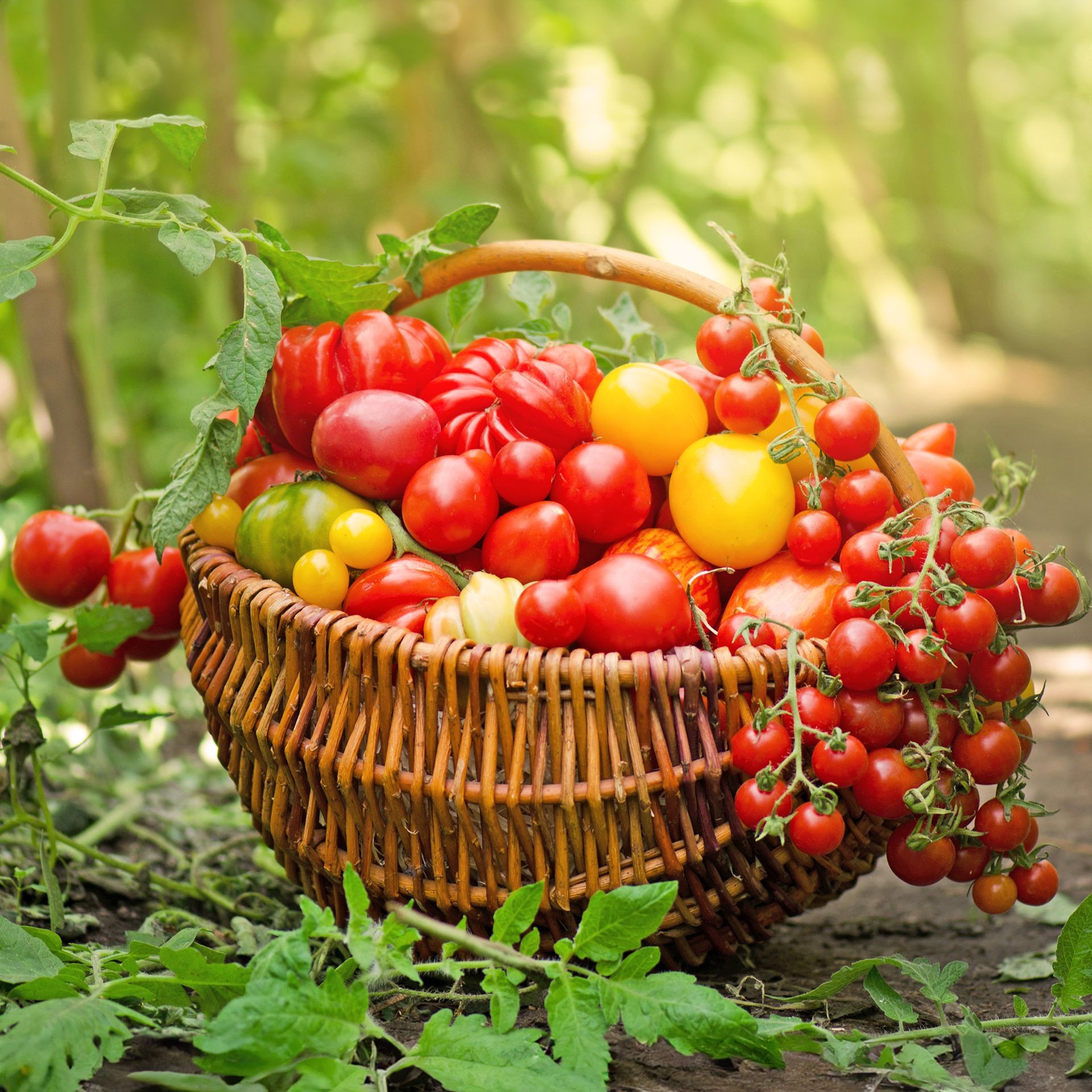 Vibrant selection of freshly harvested heirloom tomatoes in various colors and shapes
Vibrant selection of freshly harvested heirloom tomatoes in various colors and shapes
What Distinguishes Heirloom Tomatoes?
The term “heirloom” or “heritage” applied to tomatoes typically refers to varieties that meet certain criteria, though the definition can sometimes be flexible. Strictly speaking, an heirloom tomato is an open-pollinated, non-hybrid variety that has been grown consistently for at least 50 years. However, in common usage today, any open-pollinated tomato is often considered an heirloom.
Open-pollination is the defining characteristic. This means the plants are pollinated naturally by wind, insects, birds, or other animals. The crucial result of open-pollination is that if you save seeds from the fruit of an heirloom plant, and that plant wasn’t cross-pollinated by a different variety nearby, the seeds will grow into plants genetically identical to the parent plant. This reliable propagation method is precisely how these cherished varieties have been preserved and passed down through many generations.
In contrast, hybrid tomatoes are intentionally crossbred varieties created in controlled environments by combining the traits of two specific parent plants. They are often bred for uniformity in size, shape, disease resistance, or shelf life – traits valued in commercial agriculture. While hybrids can offer certain advantages, saving seeds from a hybrid plant is unpredictable. The seeds may not germinate, or if they do, the resulting plants will likely not produce fruit with the same characteristics as the parent, as the genetic stability is not carried forward.
Beyond their propagation method, heirloom tomatoes are celebrated for qualities often prioritized over the uniformity and resilience of hybrids. Their flavor is generally considered more complex, nuanced, and intense. And aesthetically, they are wildly diverse and often visually stunning, making them a joy to grow and a centerpiece on any plate. You can find heirlooms in virtually every color imaginable – reds, oranges, yellows, greens, purples, blacks, whites, and even striped or mottled combinations. Their shapes can be equally varied: perfectly round, ribbed, lobed, pear-shaped, or elongated like sausages. This incredible variety ensures there’s always something new and exciting to discover.
However, it’s worth noting the potential trade-offs. Because they haven’t typically been bred specifically for disease resistance in the same way as many hybrids, heirloom varieties can sometimes be more susceptible to common tomato ailments. Additionally, their often thinner skins and juicier flesh can mean a shorter shelf life compared to the thicker-skinned, firmer hybrids designed for transport and storage. But for many gardeners, these minor challenges are well worth the superior taste and unique experience.
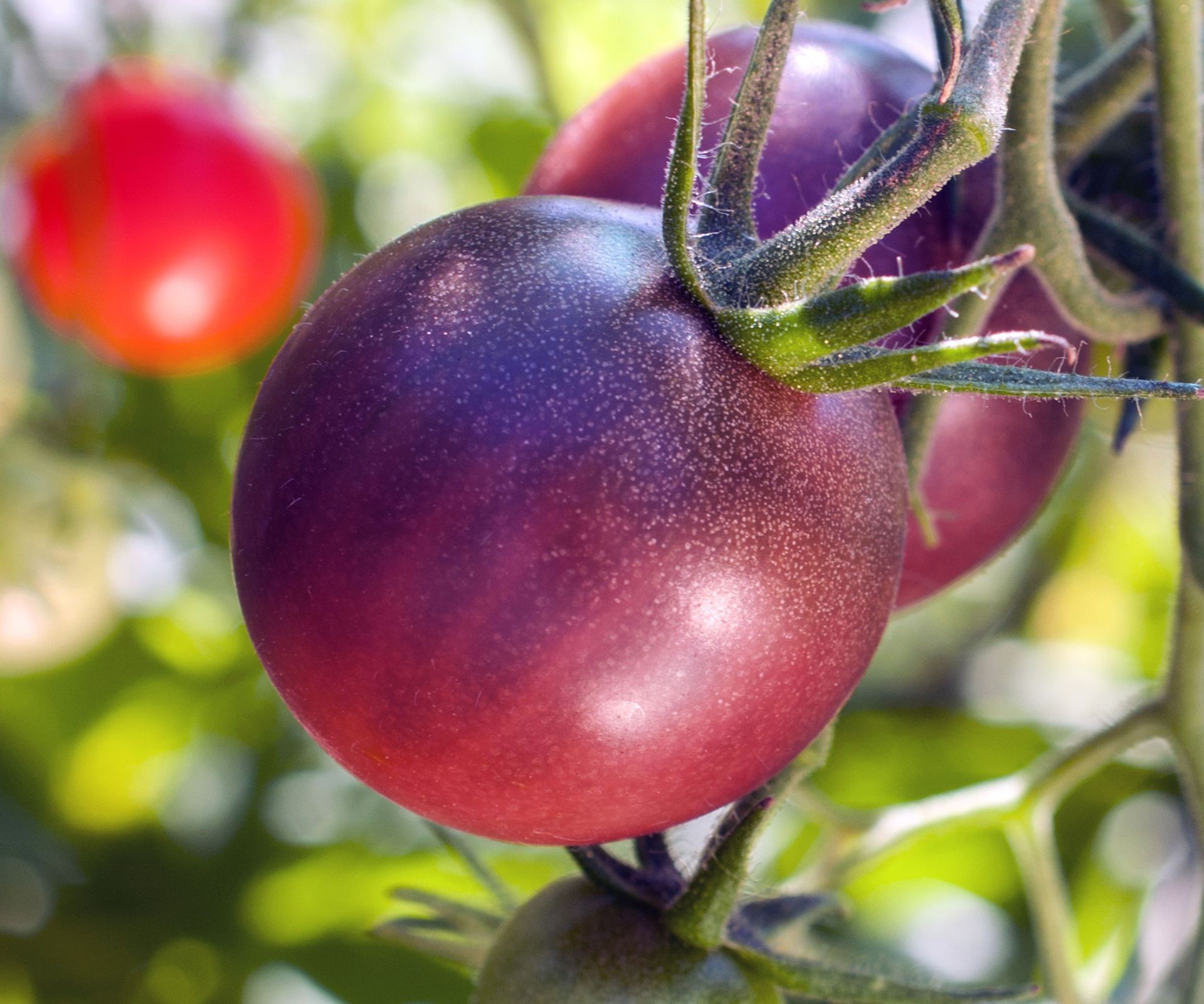 Close-up view of deep purple heirloom Cherokee Purple tomatoes ripening on the vine
Close-up view of deep purple heirloom Cherokee Purple tomatoes ripening on the vine
Choosing the Perfect Heirloom Tomato Varieties for Your Garden
Selecting the “best” heirloom tomato is a deeply personal and location-specific endeavor. A variety that thrives and tastes amazing in one garden may struggle in another due to differences in climate, soil, or pest pressures. Heirloom varieties often excel in the specific regions where they were developed.
The most effective way to find suitable heirlooms is to connect with other gardeners in your local area. Local gardening groups, agricultural extension services, or even knowledgeable staff at local nurseries can provide invaluable recommendations based on their experience with varieties known to perform well in your specific climate and soil conditions. Understanding the origin of a particular heirloom can also be a helpful guide; if a variety was developed in an area with a similar climate to yours, it’s more likely to succeed.
Despite this regional variability, some heirloom varieties have earned a reputation for being relatively adaptable and are often recommended as excellent “starter” heirlooms for those new to growing them. These reliable choices frequently include favorites like Cherokee Purple, Brandywine, Hillbilly, Mortgage Lifter, Amish Paste, and Yellow Pear.
Keep in mind that the vast majority of heirloom tomato varieties are indeterminate. This means they have a vining growth habit and will continue to grow, flower, and produce fruit throughout the entire growing season until they are stopped by frost. This provides a continuous harvest. A smaller number of heirlooms are determinate, meaning they grow as bushier plants and tend to produce the majority of their fruit in a concentrated period, making them suitable for canning or sauce-making where a large batch of ripe fruit is desired at once.
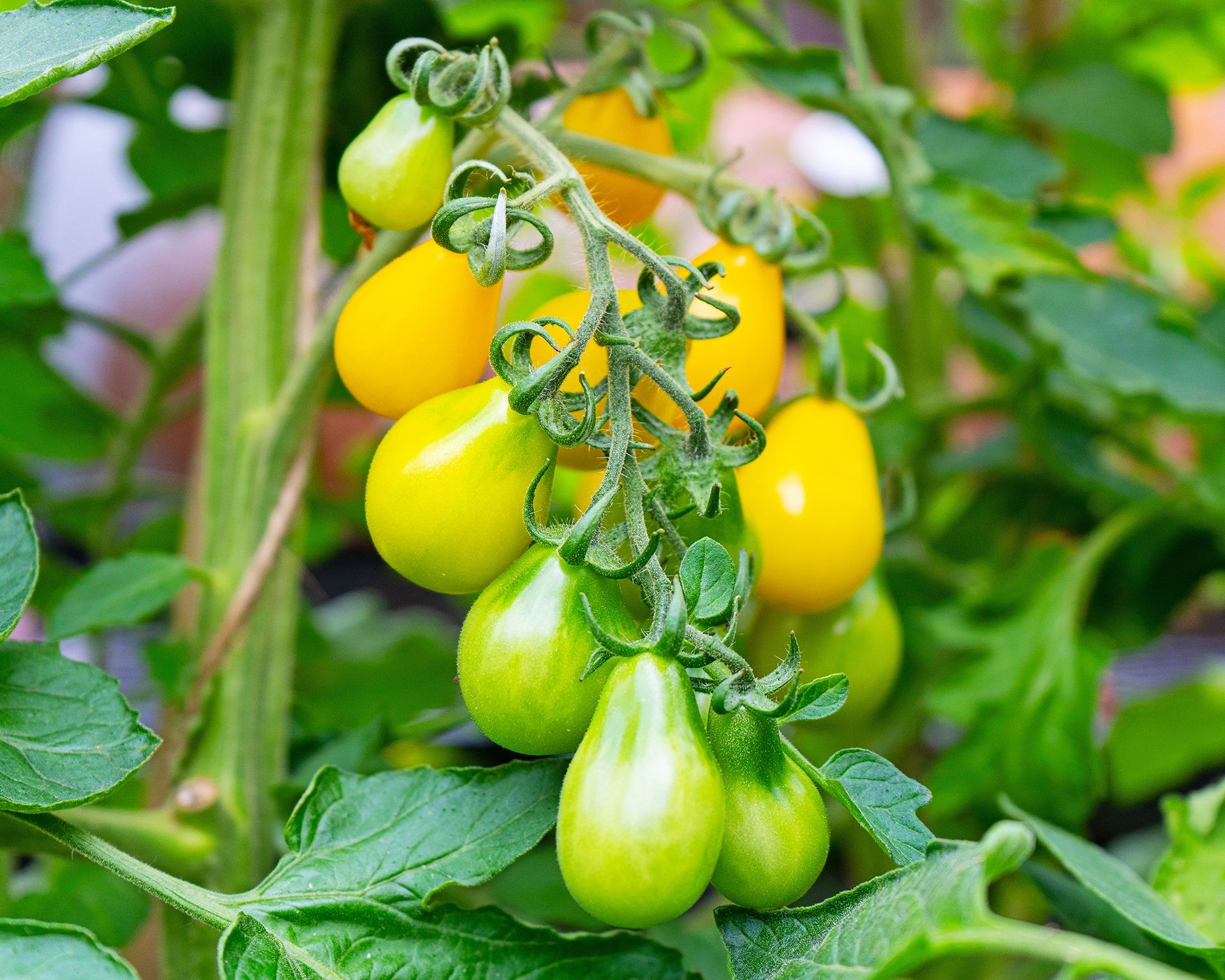 Cluster of small, yellow pear-shaped heirloom tomatoes hanging from the plant
Cluster of small, yellow pear-shaped heirloom tomatoes hanging from the plant
Top Heirloom Picks for Different Growing Goals
Growing heirloom tomatoes is accessible for most gardeners, provided they receive adequate sunshine (at least eight hours daily), are planted in fertile, well-draining soil, and receive consistent water. Smaller varieties like grape and cherry tomatoes are particularly forgiving and excellent for beginners, often thriving in containers. Here are some top recommendations based on popular criteria:
Best for Beginners
These varieties are known for relatively vigorous growth and reliable production, offering a great introduction to the world of heirlooms.
- Gold Nugget Cherry: A prolific indeterminate variety producing sweet, golden-yellow cherry tomatoes early in the season (around 54 days to maturity).
- Black Cherry: Features stunning mahogany-colored fruit with purple shoulders. These sweet-tart cherries are ready for snacking in about 65 days.
- Brad’s Atomic Grape: An absolute showstopper, larger than a cherry and oblong. Its skin is striped with unique lavender, green, and purple hues. Matures in about 75 days.
- Candyland Red: Known for a flavor often compared to sweet currants. These small, round, red cherries are ready very early, often in just 55 days.
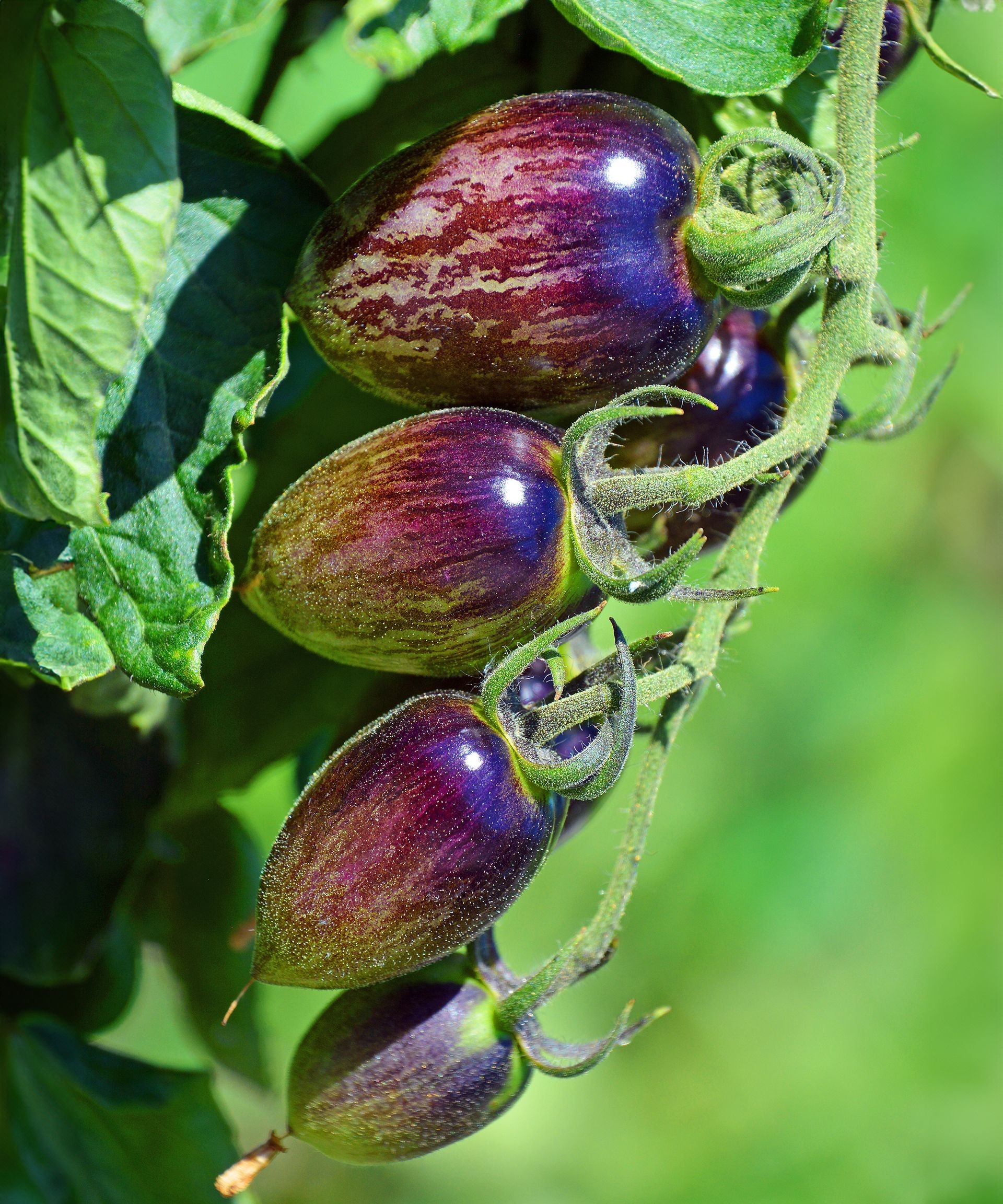 A cluster of striped Brad's Atomic Grape heirloom tomatoes on a stem
A cluster of striped Brad's Atomic Grape heirloom tomatoes on a stem
Best for Unforgettable Flavor
Flavor is the hallmark of heirloom tomatoes. These varieties consistently rank high for their rich, complex taste profiles, often balancing sweetness with acidity and a depth of character. (Note: Due to restrictions, specific variety names known only for flavor from the original article cannot be listed here without their descriptions provided in the original. The focus shifts to encouraging exploration based on local recommendations and general traits). Look for varieties recommended locally for outstanding taste. Often large beefsteak types or certain cherry tomatoes are praised for their depth of flavor.
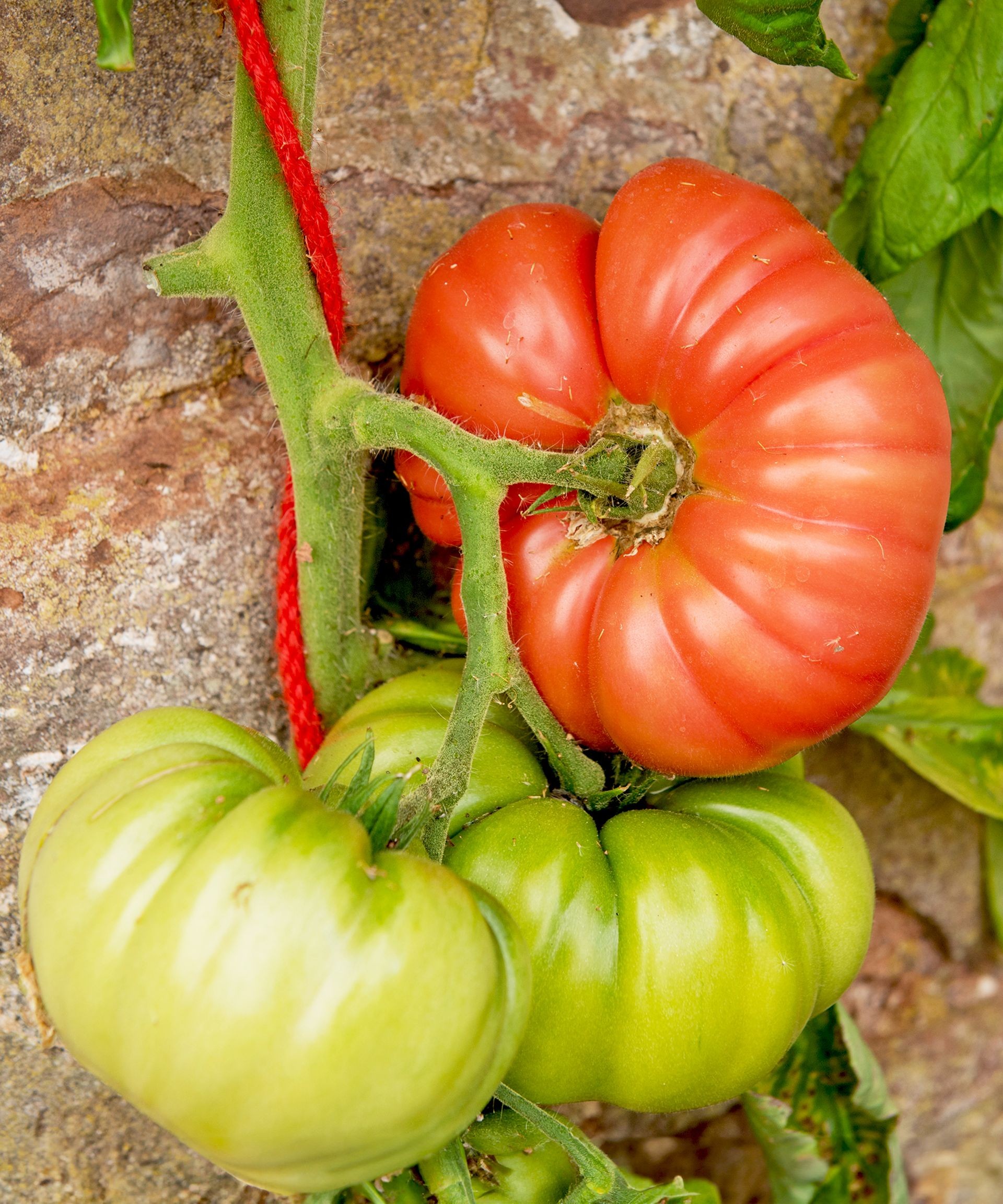 Large, pink Mortgage Lifter heirloom tomatoes growing on the vine, prized for flavor
Large, pink Mortgage Lifter heirloom tomatoes growing on the vine, prized for flavor
Best for Unique Appearance
If you want your garden to stand out or enjoy culinary creativity, these quirky heirlooms offer unusual looks alongside great taste.
- Green Zebra: An early producer with medium-sized fruits adorned with striking yellow and green stripes. Despite being green when ripe, it offers a delicious, slightly tart flavor. Matures in about 75 days.
- Nebraska Wedding Heirloom: Produces distinctive medium-sized, bright orange fruits, typically ready in about 75 days.
- Super Snow White: Large white cherry tomatoes with translucent skin, celebrated for being exceptionally sweet and juicy. Matures in around 73 days.
- Speckled Roman: An elongated plum tomato with beautiful red skin striped with orange. Its flesh is sweet and meaty with few seeds, perfect for sauces, and ready in just 65 days.
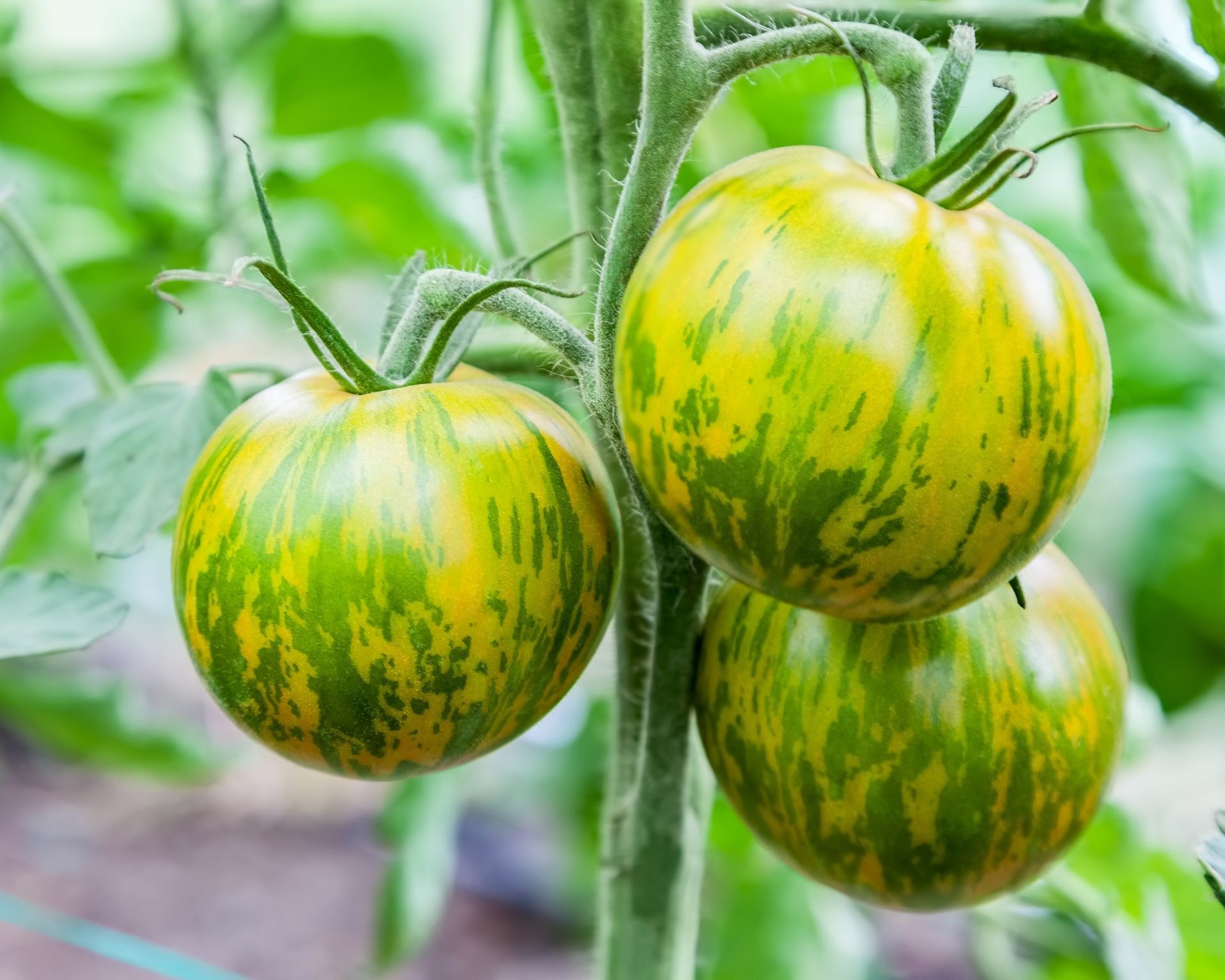 Heirloom Green Zebra tomatoes on the vine, showing characteristic green and yellow stripes
Heirloom Green Zebra tomatoes on the vine, showing characteristic green and yellow stripes
Best for Adapting to Different Climates
Selecting heirlooms suited to your specific climate is crucial for success. Consider your region’s typical temperatures and the length of your growing season. Gardeners in hot climates may need heat-tolerant varieties or plant strategically, while those in cooler areas should seek out early-maturing types that can produce a crop before the first frost.
- Sub Arctic Plenty: Developed for very cold regions and short growing seasons, this variety is incredibly fast, maturing in just 48 days.
- Prudens Purple: A rediscovered variety known for its tolerance to high heat conditions, producing large, heavy fruits in about 72 days.
- Black Prince: Originating from Siberia, this tomato is noted for its cold tolerance. It offers dark red-brown flesh and a sweet flavor, ready in about 70 days.
- Moskvitch: A slicing tomato native to the Andes but adapted for cooler climates, producing deeply red fruits with a sweet-tart taste, ready for harvest in about 75 days.
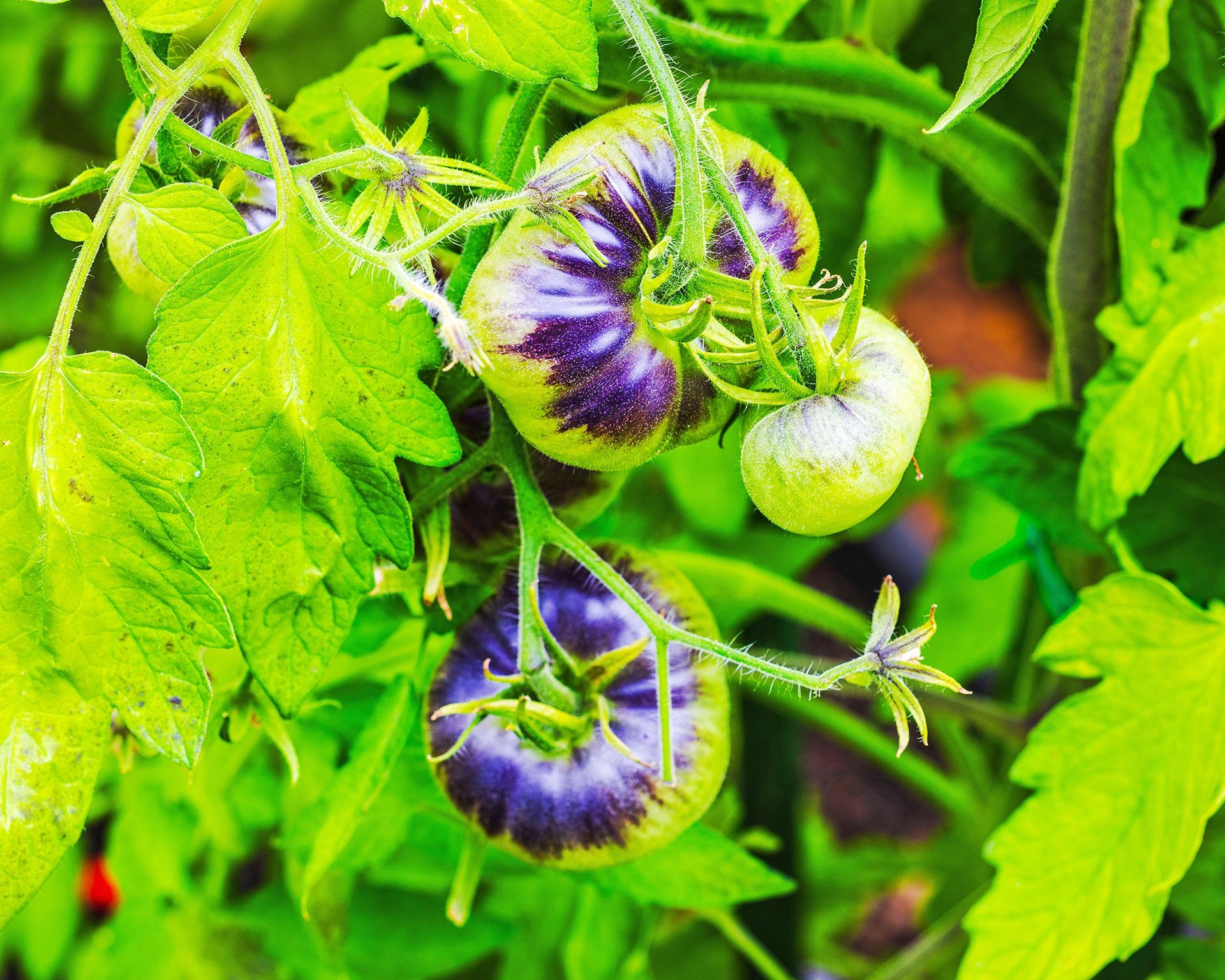 Heirloom Black Prince tomatoes with dark, reddish-brown skin ripening on the plant
Heirloom Black Prince tomatoes with dark, reddish-brown skin ripening on the plant
Mastering the Art of Growing Heirloom Tomatoes
Cultivating heirloom tomatoes connects you with history and rewards you with a bounty of diverse, flavorful fruit. While many are long-season plants requiring 90 to 110 days from seed to fruit, careful planning and consistent care will lead to a successful harvest. As experts at Biogarden.asia, we’ve found these tips essential:
Choose the Right Location
Tomatoes are sun-worshippers. They absolutely need a location that receives at least eight hours of direct sunlight daily. The site must also have good drainage to prevent root issues, and the soil should be loose and moderately fertile.
Starting From Seeds vs. Transplants
For gardeners in regions with shorter growing seasons, starting tomato seeds indoors is highly recommended. Begin about six to eight weeks before your average last frost date. This gives you a head start. Alternatively, you can purchase young plants (transplants) from a reputable nursery. Regardless of how you start, young plants need to be gradually acclimated to outdoor conditions – a process called hardening off – before being permanently planted in your prepared garden beds or containers.
Planting Depth and Spacing
When planting seeds directly, sow them about ¼ inch (6mm) deep. When planting transplants, spacing is crucial. Give your plants ample room to grow and allow for air circulation, typically spacing them 1 to 3 feet (35 to 90cm) apart, depending on the expected mature size of the variety. Burying a portion of the tomato stem when planting transplants encourages stronger root development.
Enrich the Soil
Healthy soil is the foundation of healthy plants. Before planting, incorporate generous amounts of well-rotted compost, aged manure, leaf litter, or other organic amendments into your planting site. This improves soil structure, provides a slow release of essential nutrients, and helps the soil retain moisture.
Water Well and Consistently
Consistent watering is perhaps the single most critical factor for healthy tomato growth and preventing issues like blossom end rot. Tomato plants generally require 1 to 2 inches (2.5 to 5cm) of water per week, delivered deeply to the root zone. However, this can vary significantly based on temperature, rainfall, soil type, and whether the plant is in a container (which may need daily watering in hot weather). Aim for consistently moist soil, not waterlogged or bone-dry.
Fertilizing for Fruit Production
While amending the soil at planting provides initial nutrients, supplemental feeding can support vigorous growth and abundant fruit production, especially for indeterminate varieties that produce all season. Organic options like compost spread as mulch around the base of the plant offer slow, continuous feeding. A liquid fertilizer balanced for tomatoes or flowering plants can also be applied periodically as directed. Some gardeners also find success incorporating organic materials like crushed eggshells (for calcium), coffee grounds, or bone meal.
Mulching to Protect and Nourish
Applying a layer of organic mulch around your tomato plants offers multiple benefits. It helps conserve soil moisture, keeps the soil temperature cooler and more stable, and suppresses competitive weeds. As organic mulch (like straw, shredded leaves, or grass clippings) decomposes, it also slowly releases nutrients into the soil, further feeding your plants.
Staking and Supporting Growth
Since most heirloom tomatoes are indeterminate with extensive vining habits, providing support is essential. Without stakes, cages, or trellises, the heavy vines and fruit will sprawl on the ground, making them susceptible to pests, diseases, and rot. Install support structures at planting time or when plants are still small to avoid damaging the roots later.
Pruning for Better Airflow and Energy Direction
Pruning tomato plants helps manage growth and can direct the plant’s energy towards fruit production. A common practice is removing “suckers,” which are small shoots that emerge from the leaf axils (the point where a branch meets the main stem). These suckers are vegetative growth and won’t produce fruit. Pinching them off encourages the plant to focus its energy on the main stems and existing fruit-bearing branches, improving airflow and potentially reducing disease risk.
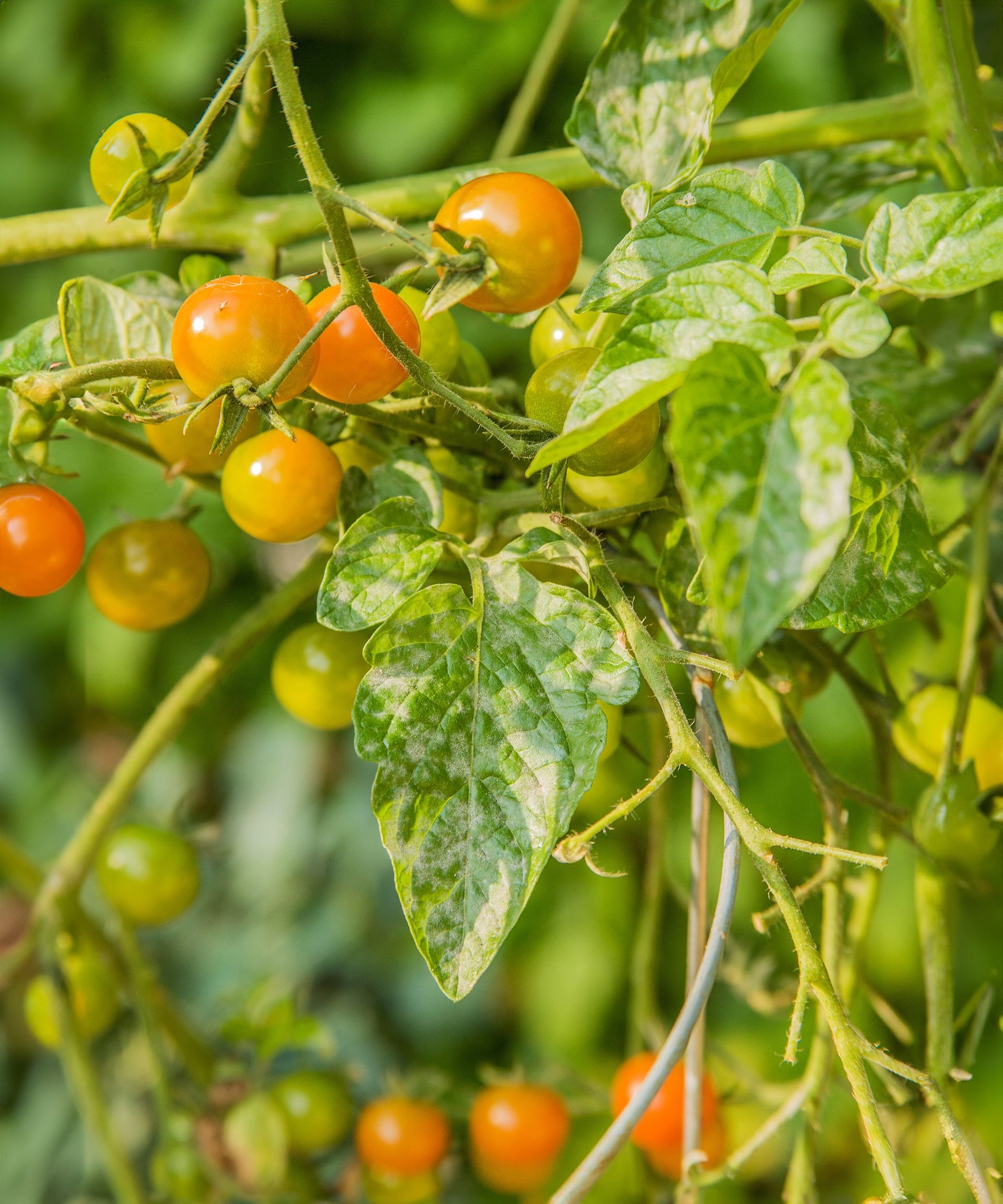 Heirloom Gold Nugget cherry tomatoes on the vine, some showing signs of powdery mildew
Heirloom Gold Nugget cherry tomatoes on the vine, some showing signs of powdery mildew
Addressing Common Challenges
While heirloom tomatoes have proven their resilience over generations, they can sometimes face specific issues that gardeners should be aware of. Common problems can include increased susceptibility to certain fungal diseases like early blight or powdery mildew compared to some disease-resistant hybrids. Pest issues can also arise, though often managing the overall health of the plant through proper feeding and watering is the best defense. Because of their often thinner skins and juicier texture, heirloom tomatoes also typically have a shorter shelf life after harvesting than commercial varieties, meaning they are best enjoyed fresh soon after picking.
The Rewarding Practice of Saving Heirloom Tomato Seeds
One of the most beautiful aspects of growing heirloom tomatoes is the ability to save your own seeds and continue their legacy. Selecting ripe, healthy fruits from your most successful plants is the first step. Scoop out the pulp and seeds into a container and add a little water. Allow this mixture to ferment for a couple of days; this process helps separate the viable seeds from the pulp and inhibits seed-borne diseases. After fermentation, skim off any mold or pulp, strain the seeds, and spread them out on a non-stick surface (like a ceramic plate or parchment paper) to dry thoroughly in a cool, airy location away from direct sun. Once completely dry, store the seeds in a paper envelope or an airtight container in a cool, dark, and dry place for planting in future seasons. This simple act connects you directly to the generations of gardeners who preserved these incredible varieties.
Experience the Difference with Biogarden.asia
Growing heirloom tomatoes is a deeply rewarding journey that offers flavors and experiences you simply can’t find anywhere else. From the thrill of discovering a new, unique variety to the satisfaction of harvesting your own flavorful fruit, heirlooms bring joy back to the garden and the kitchen. By choosing heirloom seeds, you participate in preserving agricultural biodiversity and ensuring these incredible tastes endure.
Ready to explore the world of heirloom tomatoes and cultivate your own exceptional harvest? At Biogarden.asia, we believe in the power of quality seeds and sustainable gardening practices. Discover our range of gardening essentials and begin your heirloom tomato adventure today. Share your growing experiences and the delicious results with our community – we can’t wait to see what you grow!



